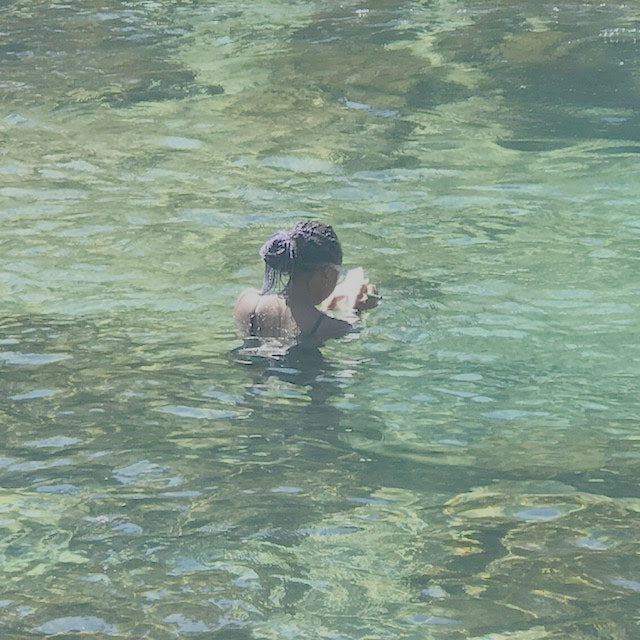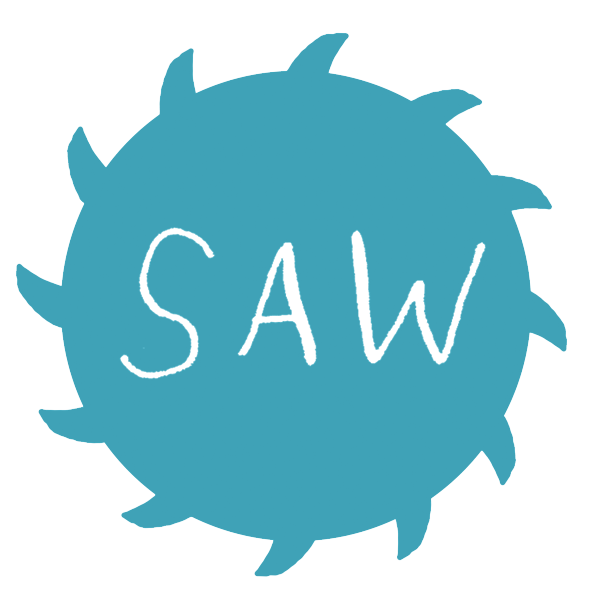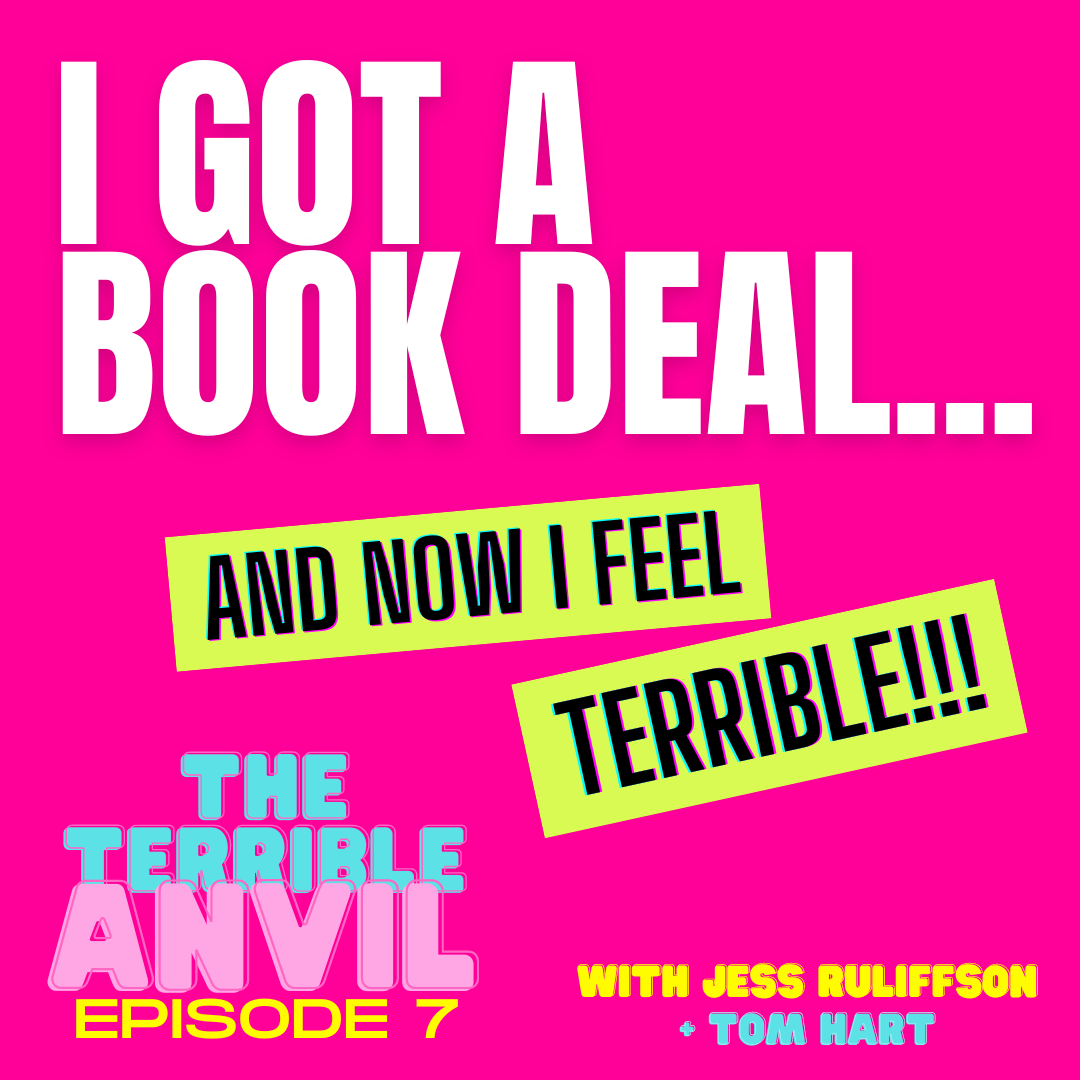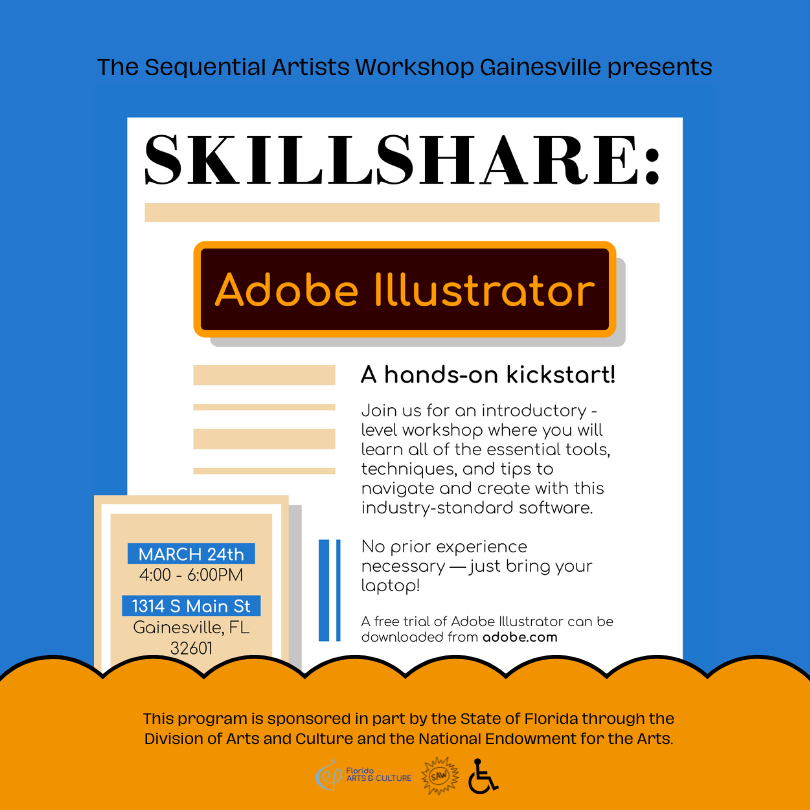
NOTES FROM SAW
Here’s the place to check out everything that’s been going on at SAW including what we're learning, reading and drawing.
Black history month
At SAW, we stand with those who have put their lives on the line for generations to fight for equal rights, equal footing, equal safety, and equal expression. We want to use our platform to amplify Black comics artists from the past and present who make innovative, joyful, reflective comics that are changing the world.
The Terrible Anvil - Feeling Bad After Pitching Your Graphic Novel - Episode 7
Eisner-nominees Jess Ruliffson and Tom Hart discuss how to pitch your book—and what to do when you get a deal! Learn about finding a literary agent and pitching to Big Five publishers; setting realistic expectations and boundaries around deadlines and money; and processing all the big feelings that come with publishing your graphic novel.
The Terrible Anvil - On Early Drafts in Episode 3
Episode 3 - On Early Drafts
We had THREE topics that were somewhat braided together:
A thought Jess had: Become more interested in DOING what you're doing than KNOWING what you're doing.
A quote I wrote down: "I often find myself writing long meandering first drafts, that drift around a bit before settling down into a state of baffling indecision." - George Saunders
The Terrible Anvil - Lean into the WORST with Episode 2
The Terrible Anvil: Episode 2 - Lean into the worst. In the Comics FLOW + PUBLISH group we asked around: how do you lean in when the going gets weird? What parts are EXTRA UNFUN, and how do you navigate it?
We spoke on all these topics, as well as the role of ritual and community in answering these three questions. We cooked up ideas on how to make a home there in the ruins, being okay with badly-drawn hands, what to embrace when we're working.
Upcoming SAW Pro-Call with Tessa Hulls - February 6
Our next Pro-Call is with Tessa Hulls! Come join us in our most affordable, online ongoing-community SAW FLOW + PUBLISH MEMBERSHIP GROUP (comes with a two-week free trial) to join in on MONTHLY PRO-CALLS!
We bring in comic professionals from all walks of life to guest speak (virtually) at SAW. These guest speakers give SAW students/members some insight from their personal experiences throughout their comics career and welcome questions at the end of each session. Come join us!
WHO AM I? WHAT AM I DOING??
Your Idea(s) Will Change Over Time
Nail down some thoughts on paper or a napkin. Everything counts. Gather everything together and look at it. What are the napkins telling you that you don't know? Sometimes we project a structure onto something early on that falls away later in service of the narrative. That is normal and good!
The Terrible Anvil: A podcast with Jess Ruliffson and Tom Hart
Jess Ruliffson and I are starting our live discussion series, The Terrible Anvil, tomorrow , Jan 11, 2024 in the Sequential Artists Workshop Flow Community and this post is an invite (you can sign up for a free 2 week trial here: https://learn.sawcomics.org/courses/comics-flow-group )
Too much dialogue? Just talking heads?
Conversation is a part of life. Let's bring readers into the life of our comics. It comes up a lot where people think maybe they have too much dialogue, too many “talking heads". It can happen, but it doesn’t always happen.
The famous way out of this is Wally Wood’s “22 panels that always work when some dumb writer has a bunch of lame characters sitting around and talking for page after page…”
Lauren Groff on Process
SAW's favorite novelist on drafts, failure, and limitation as gift.
As a maker-writer, you may have a story in mind, the beginning of a story, the end of a story in mind—but rather than emphasizing the narrative arc, she places importance on the process of a “continual thickening until right shape emerges…”
Human Gestures Are Like The Alphabet
We read them instantly.
For Conversation:
Will Eisner, in his Comics and Sequential Art, makes the case that figures in a comic are like an alphabet that we "read."
Excerpted from
https://archive.org/details/Will_Eisner_Theory_of_Comics_and_Sequential_Art/page/n15/mode/2up
In this example below, he shows the example of a "worship symbol."
Do we create emotion symbols with our figures? What do you think? Share some examples or non examples in the comments!
Jess Ruliffson on "Art Budgeting" with Alison Bechdel's Fun Home
One thing I seem to be thinking about a lot lately is how to make an "art budget" for a long form comic. Or even a short comic! In the SAW weekly meetings, sometimes we do short exercises.




















